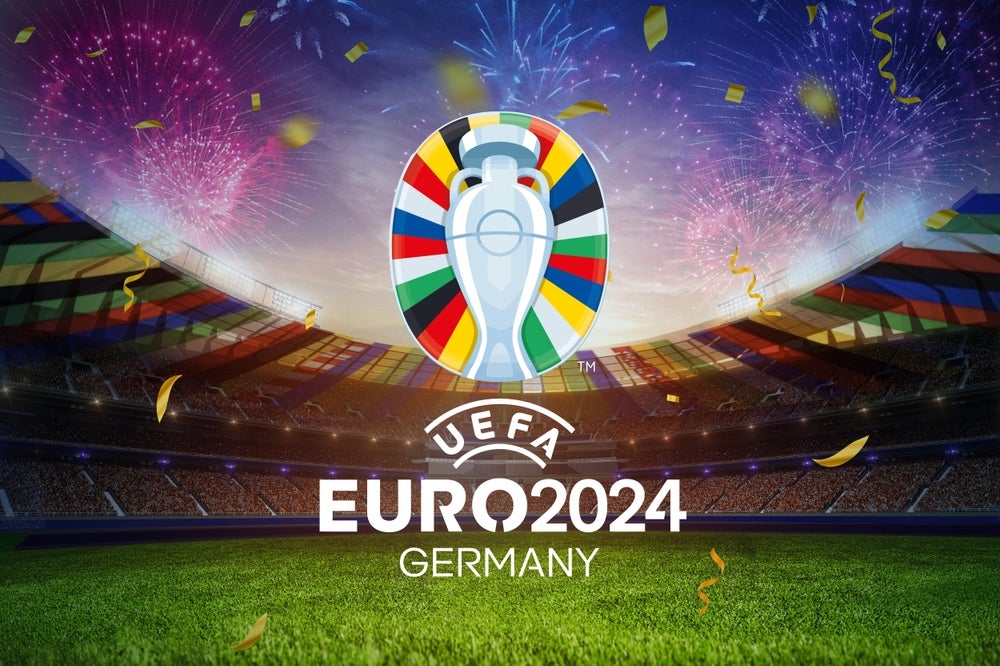If anyone needed convincing that Poland is a growth
hotspot for electronic payments, one only needs to look at
transaction volumes to be certain. Successful implementation of new
payment technologies by the country’s banks is a key factor, as
Victoria Conroy reports.
With a population of around 38.5m,
Poland has reaped the rewards of economic liberalisation since 1990
to become one of the most dynamic payment markets in the world. Its
2004 entry into the European Union (EU) accelerated the development
of the country’s financial system, giving a major boost to the
economy and opening a vast pool of opportunity for payment
players.
Poland’s credit card
market
EPI’s analysis of the Polish payment market reveals
that, despite the credit crunch-related hangover which has
afflicted spending volumes and bank lending over the past two
years, the country is continuing to embrace credit cards with
enthusiasm.
Judging by the high double-digit
growth rates for credit card issuance, Poland is by far the largest
credit card market in the Central and Eastern European (CEE)
region. From just 2.8m credit cards in 2004, that number had risen
to more than 9.4m by the end of 2008, representing 31.1% of all
payment cards in Poland. This was helped in part by the waning
usage of deferred debit or charge cards in favour of credit cards.
Unsurprisingly, Poland is the largest market in the CEE region in
terms of credit card transaction value (€5.2bn [$7.2bn] in
2008).
How well do you really know your competitors?
Access the most comprehensive Company Profiles on the market, powered by GlobalData. Save hours of research. Gain competitive edge.

Thank you!
Your download email will arrive shortly
Not ready to buy yet? Download a free sample
We are confident about the unique quality of our Company Profiles. However, we want you to make the most beneficial decision for your business, so we offer a free sample that you can download by submitting the below form
By GlobalDataEPI’s analysis of Polish
card numbers and card spending show credit card growth levels far
outstripping debit levels, and although 2008 marked a definite
slowdown in terms of spending, credit cards still managed to record
a 26.42% jump in spending to total PLN26.8bn ($8.9bn).
There are many reasons why Poland
has become such a growth hotspot for credit cards in recent
years.
Poland’s entry into the EU in 2004
in particular saw a massive spike in credit card numbers due to the
growing presence of foreign banks in the country. These banks were
quick to acquire Polish rivals, with some of the leading issuers in
the country becoming units of Western banking groups, such as
UniCredit and Crédit Agricole. These banking giants transported
their marketing and customer acquisition expertise to Poland.
Secondly, Polish consumers are
already familiar with the concept of consumer credit and instalment
loans, and issuers have lowered applicant acceptance criteria in
recent years to reach a wider pool of potential cardholders –
although this has also led to a sharp rise in bad debt
recently.
With cost efficiency being the
mantra for Polish banks, they have also placed much more emphasis
on less costly customer acquisition channels such as the internet,
and direct and mobile sales forces, along with cross-selling to
existing customers. It is this approach, rather than a focus on
large-scale marketing campaigns, that has helped Polish banks to
record such impressive card growth numbers.
Although the rate of card issuance
is slowing down, Polish banks are still recording double-digit
growth rates in terms of cards issued, but activating those cards
continues to be a major challenge to the market fulfilling its
potential. The focus is now switching from mass card roll-outs to
educating and incentivising consumers to activate and use the cards
on a regular basis, typically through promotional campaigns such as
prize draws, and drawing on direct sales forces to educate new
cardholders at the time they sign up.
Another emerging tool to increase
activation and usage is tiering or elimination of annual fees – the
larger the number of transactions per month, the lower the annual
fee levied, with frequent usage above a certain level of
transactions per month resulting in no annual fee being
charged.
In 2007, the Polish Office of
Competition and Consumer Protection (OCCP), in response to a
complaint brought by Polish retailers, ruled that interchange fees
between banks in the Visa and MasterCard schemes were illegal and
imposed fines of PLN164m on the 20 banks involved, along with
ordering them to discontinue their interchange arrangements.
Interchange fees in Poland at the
time were between 1% and 2%, bringing in annual revenue for the
banks of around PLN400m. The OCCP stated the interchange fee level
was not based on objective criteria, such as transaction costs for
banks, but “determined by way of an agreement between entrepreneurs
who communicated with each other in order to obtain additional
revenue from each transaction made with Visa and MasterCard
cards”.
However, in November 2008, the OCCP
ruling was overturned following an appeal filed on behalf of the
banks, in which the banks argued that the existence and
standardisation of interchange fees was necessary for the proper
functioning of payment card systems, and interchange fees sheltered
consumers from extra costs arising in connection with each card
transaction.

Debit
dominates
However, it is debit that is the dominant payment card in
Poland, not surprisingly given the country’s historical dependence
on cash and domestic ATM cards. In terms of card numbers, again
Poland is the largest market in the CEE region, with 20.5m debit
cards in circulation as of 2008, a rise of nearly 50% compared to
the previous year.
Debit cards are primarily used for
ATM withdrawals, which as of 2008 amounted to PLN231.9bn, a 10.8%
rise compared to 2007. Cash withdrawals continue to form the bulk
of debit card transactions in Poland, although there are promising
signs that consumers are becoming more sophisticated and educated
and are using debit at the POS in ever-greater numbers.
But, however impressive these
figures are, they need to be tempered by the fact activation and
usage of both debit and credit cards falls way behind more
developed card markets.
In terms of average POS transaction
value per card, Poland is very much on an upwards trajectory, which
is encouraging for issuers and payment networks as it illustrates
the fact that consumers are increasingly making a greater
proportion of payments at the POS. However, the CEE region card
markets have large average transaction values in common, indicating
it will be some time before consumers in these markets ditch their
cash addiction.
An emerging trend in 2008 regarding
Polish ATM usage is that, although values and transaction volumes
are rising year on year, the rate of growth is slowing markedly,
with 2008 showing the largest growth rate contraction in the past
10 years.
Polish consumers embrace
technology
The last two years have also seen the introduction of
contactless payment in Poland for transactions under PLN50 at small
individual merchants and larger retailer chains, and banks have
made concerted efforts to market the technology to the country’s
technologically savvy younger consumers.
One reason why contactless debit
payment is being pushed by banks in the country is that average
debit and credit card transaction values in Poland are relatively
low compared to the rest of Europe. EPI analysis of Polish
card transaction values in 2008 show the average debit card POS
spend was PLN94.29, and the average credit card transaction value
was PLN166.77.
Poland’s consumers are some of the
most avid users of telephone and internet banking in the world. As
of 2007, there were over 41m mobile phones in use, a rise of 129%
since 2006, and 16m internet users. It is likely that internet
shopping will see much bigger jumps in card payments in Poland in
the next few years, in tandem with the roll-out of EMV-enabled
cards. In 2006, only 5.5% of all cards in Poland incorporated EMV,
but this had risen to 16.1% by the end of 2008.

Clearing
systems
The National Bank of Poland (NBP) owns and operates the
real-time gross settlement (RTGS) SORBNET payment system, where all
interbank payments are settled through the commercial banks’
accounts with the NBP.
This also includes payment
instructions, which originate from the National Clearing House
(KIR) or the National Depository for Securities. SORBNET commenced
operations in March 1996. Prior to that, banks could only present
their payment instructions on paper or a floppy disk.
Transaction types handled include
individual, urgent, same-day-value payments instructions in PLN
related to money market, foreign exchange and securities market
transactions, transactions between banks and the NBP (from other
clearing systems) and high-value customer payments in excess of
PLN1m. Customer transactions for lower amounts are also allowed
upon an individual request.
The NBP also provides settlement
services via the paperless net settlement system ELIXIR/EuroELIXIR,
operated by KIR. The owners of KIR are the NBP, the Polish Bankers
Association and the biggest commercial banks. The ELIXIR system was
activated in March 2005, enabling all banks operating in Poland to
process euro payments. The system allows both domestic as well as
international payments in euros through STEP 2. ELIXIR processes
credit transfers, direct debits and cheques.
Poland migrated to the pan-European
TARGET2 RTGS system in May 2008 for high-value and urgent
cross-border payments denominated in euros. The current
pan-European RTGS system, TARGET, migrated to a single shared
platform (SSP) called TARGET2 making the 16 decentralised RTGS
systems of individual Eurosystem countries and the ECB’s payment
mechanism (EPM) obsolete. The change-over took place in three
migration waves, starting in November 2007 and ending in May
2008.
The paper-based SYBIR system was
closed in July 2004, while an optical scanning system, IMBIR,
continues its operations. The IMBIR scanning system optically reads
and converts paper settlement documents into electronic documents
for further processing in ELIXIR.
In September 2005, a new service –
SWIFT Service Bureau – was introduced. It enables KIR to be an
intermediate stage in statement transfer between KIR client
location and SWIFTNet via KIR infrastructure. This new service
allows new, as well as existing SWIFT users to have a primary or
backup means of accessing the SWIFTNet for banks and financial
institutions.
Banks in Poland have been
implementing SEPA standards for euro-denominated payments. The
country’s banks now only issue SEPA-compliant debit cards (since
January 2008) and also now offer pan-European SEPA credit transfers
(since January 2008). SEPA direct debits however are still not yet
available as this has yet to be implemented at a pan-European
level.
It is not yet known how long the
transition period will last for national payment products to be
fully replaced by SEPA payments.

Other payment
methods
Cheque usage is low and has been in decline over recent years in
favour of electronic payment instruments (particularly payment
cards). Cheques are of little importance commercially and banks do
not readily cash in cheques of non-customers.
Although the cashier’s cheque is a
popular method of payment, it is classed as a cash payment under
Polish law.
By far credit transfers are the
predominant way of settling payments in Poland and their share of
total value transfers processed by KIR is more than 99%. The
existing system for the settlement of customers’ transactions via
KIR (ELIXIR) enables credit transfers between customers of two
different banks to be settled on the same day.
Business-to-business credit
transfers are electronic in their vast majority.
The first direct debit transactions
were executed in July 1998. The number of direct debits in Poland
is still low compared to mature markets such as Germany and the
Benelux countries. There are two types of instruments in the
market: the widely used direct debit, known as Polecenie Zaplaty,
and the business-to-business direct debit, known as GOBI.
Polecenie Zaplaty is commonly used
and has the same format as direct debits in other countries so it
is widely accepted. There is a limit of €1,000 ($1,300) on each
transaction value if it is a direct debit to an
individual/non-corporate, and it also has a revocation period of 30
days. If the recipient (debtor) is a corporate, the transaction
limit is €50,000 and the revocation period is five days. The
transaction limit of €50,000 and the revocation option means that
this is a more popular choice for corporates than GOBI.
GOBI business-to-business direct
debit is supported by a limited number of banks and is irrevocable.
There is no limit to the value of each transaction. This means
that, if two business parties agree to use this instrument, it is a
very effective collection method for the recipient. However, its
irrevocability is also an impediment to its widespread use, as not
all corporate treasurers are comfortable with this aspect.
The development of
e-commerce
Figures from 2007 show the percentage of internet users and
online shoppers in the European Union. Although the UK had the
largest percentage of online shoppers (44%), in Poland, 11% of the
society aged 16-74 shopped online, ranking the country first among
the new EU member states from the CEE region. This was only
slightly lower than Spain (13%) but higher than Italy (7%) and
Portugal (6%).
At the turn of the millennium,
e-commerce played a minor role in Poland, and it was only in 2004
that its take-off began. According to data from the Interactive
Advertising Bureau, the first time e-commerce accounted for 1% of
total retail trade in Poland was in 2005 (whereas it was 2.5% in
Western Europe and 4% in the US).
In 2007, Polish e-commerce turnover
increased by 61% and equalled €2.12bn. A typical feature of the
Polish internet market is a large share of online auction markets,
accounting for 50% to 60% of total turnover. The development of
e-commerce in Poland is driven by a sharply increasing number of
internet users, which rose from 8.8m to 14.1m between 2005 and
2007, according to website Internet World Stats.
Electronic banking is becoming
increasingly common in Poland and is generally based on the
MultiCash Plus multi-banking system (the most common in Poland)
although banks are increasingly using their own custom-built
proprietary solutions.
There are two broad trends that
characterise the Polish electronic banking market: the increasing
popularity of web-based solutions that are developing at a rapid
pace and are now offered by all major banks in the corporate
services space; and the evolution of e-banking applications and
systems which offer increasing functionality to corporate
clients.
Web-based electronic banking is
being used more widely by small and medium-sized enterprises in
Poland as well as big domestic and international firms. Most big
companies that demand advanced functionality now have online
electronic interfaces with their banks.
Another factor driving the demand
for online platforms is the added technical security and
reliability of having the platform hosted almost entirely by the
bank’s IT infrastructure, which makes any adjustments to the system
easier for the bank to make. Alongside the development of
electronic trading, new payment services have appeared whereby
payment can be made online for products and/or services in online
shops and auctions.
Online payments are usually
effected using electronic transfers from bank accounts which a
customer can access online, with payment cards and via other
methods (eg prepaid internet accounts with service providers,
prepaid cards and text messaging). Nonetheless, e-payments are not
widely used in Poland.
Electronic invoicing is still at
the development stage in Poland and market standards are still to
be decided. While there is demand from Polish corporates for a
solution that lowers their cost of invoice processing and
management, e-invoicing is also dependent on other market factors,
such as the volumes of electronic credit transfers in the consumer
market and the levels of direct debits.
As there is demand from corporates, as well as banks seeking
additional features for their retail e-banking platforms, it is
likely that e-invoicing will be introduced in Poland in the
foreseeable future.








